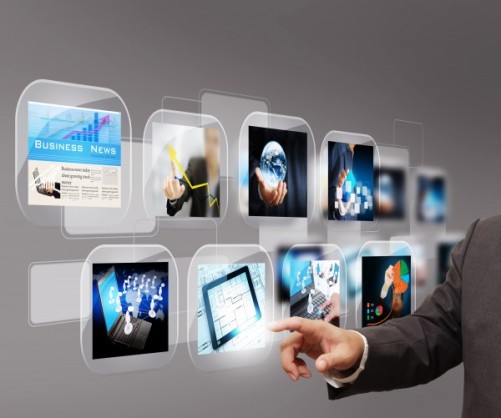
The terms “digital transformation” and “industry 4.0” have been floating around many workplaces for years now, and whilst they mean different things to different people, they both represent a sea change in the workplace that is subtly taking effect. Every year, technology further encroaches on the average workplace, to the extent that the workplace of today is almost unrecognizable to the workplace of even a decade ago.
Technology has changed not only how we communicate, collaborate and work, but how we live. It’s a fundamental part of our daily lives and as the boundaries between work and home continue to blur, it’s likely to make even more of an impact in the near future. So, what new technological wonders does 2019 hold for the workplace?
Remote and Flexible Working
With the great advances made in recent years in the average bandwidth available to UK workers, remote working is becoming a more viable option for more people. Indeed, it’s estimated that 50% of the UK workforce will be working remotely by 2020 and 75% of employees want the option of flexible working. Not only have network capabilities improved (with employees able to work seamlessly through the cloud) but so have the attitudes around remote and flexible working and hours.
Where it was once seen as a fringe benefit offered to employees every once in a while, employers are now seeing that it leads to reduced office costs, greater staff retention, higher morale and environmental benefits, not to mention the fact you’re not limited by the talent that is within commuting distance.
Connection
With Internet of Things (IoT) workspaces becoming more commonplace and modern workspaces built to provide more flexibility when it comes to connectivity, 2019 looks set to increase not only how connected our offices are, but the things we can do with them. The rise of connected buildings, where employees can work from anywhere I the office without missing a beat, seems like a given, but perhaps more interesting is the potential for ‘smart spaces.’
IoT connected workplaces will allow employees to have intricate access to and control of every facet ion their working lives. Whether they want to set their personal optimal lighting and heating levels (to follow them around the office), assign car parking spaces, or even control the heat of our seats from our phones, it will all be possible and could have a significant impact on productivity.
Automation and AI
Throughout all sectors in 2019, the role of technology in the workplace is set to increase as automation and AI become ingrained into more of our daily processes. In HR, AI will be used primarily to apply analytics, but it can also be used to accurately automate payroll solutions through services such as Moorepay, which allows you to spend less time making sure people are paid and more time actually making money.
Automation is also set to completely change the recruitment process. Imagine a machine learning program that was able to scour the web for talent automatically and present you with the most viable candidates. This would leave the human employees free to take care of more creative tasks. Of course, there are drawbacks to relying on an AI, as bad algorithms and inaccurate data will lead to bad results. As the technology improves, however, so will the speed and accuracy of the results.
Chatbots and Digital Assistants
The overwhelming success of Amazon’s “Alexa” has proven that digital assistants are slowly becoming mainstream, but there is still a way to go before they can be completely conversational. For many business applications, however, the rise of the chatbot has brought with it some interesting opportunities. With the technology set to mature further in 2019, it could very well be the year that chatbots take over many menial tasks. Reason why we need to learn the basics of how chatbot is working? So that we can become familiar and get used to it in the long run.
Chatbots are a cheaper alternative to call centre and support staff and because they operate on AI, they are constantly becoming more sophisticated as they learn more. Voice assistants, meanwhile, could streamline the workplace by allowing employees to take care of certain tasks literally without lifting a finger.
Bright Future
The future looks bright indeed for the technologically-minded workplaces of 2019 with concepts that would once have been considered science fiction now shaping our everyday working lives. With things moving so fast, we can only imagine what new tech trends 2020 will bring, but whatever they are, the workplace will always be the first place to feel the benefits.






Leave A Comment